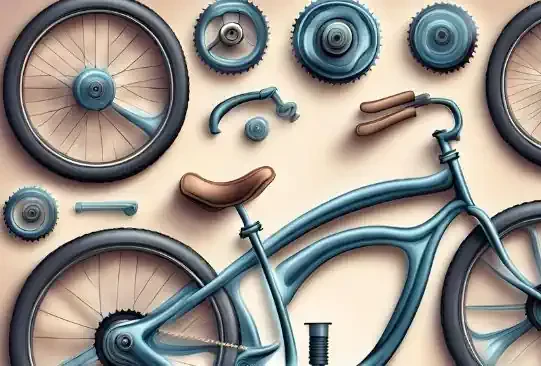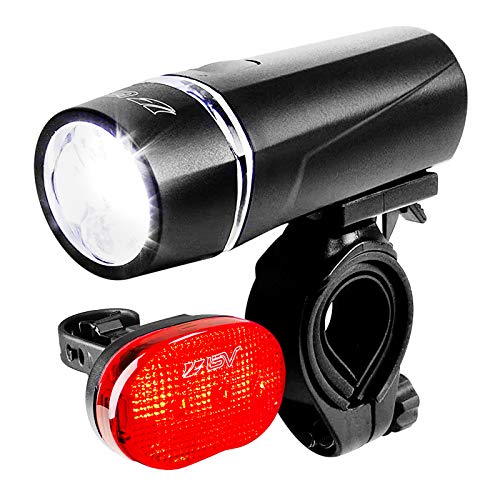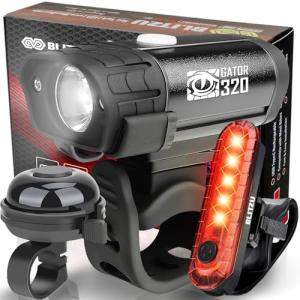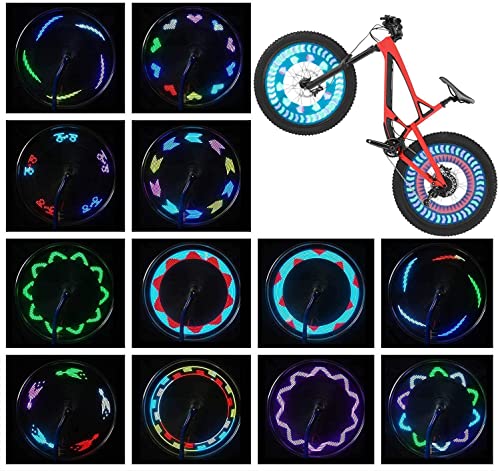Introduction
Bicycling has surged in popularity as a versatile mode of transportation, a heart-pounding form of exercise, and a delightful way to explore the great outdoors. At the heart of this activity is the bicycle itself—a seemingly simple apparatus at first glance, but upon closer inspection, reveals a complex amalgamation of intricately designed parts and mechanisms. Understanding the various components of a bicycle is not just about being able to name them; it's about appreciating how they come together to create a machine that can convert human energy into motion, efficiently and effectively. This knowledge is crucial for anyone looking to enhance their biking experience, ensuring safety, performance, and longevity of the equipment.
To truly grasp the complexity and elegance of a bicycle, it's helpful to draw an analogy with a complex organism. Just as an organism relies on the seamless integration of its various systems—such as the circulatory, respiratory, and nervous systems—to function, a bicycle depends on the harmonious operation of its parts. From the frame, which serves as the skeleton, to the gears and chain that act as the muscles providing propulsion, each component plays a critical role. Even the seemingly minor parts, akin to the veins or nerves in an organism, such as the cables that connect the brakes and gears to the controls at the handlebars, are vital for the bike's overall performance and the rider's control over it.
This analogy illuminates not only the complexity but also the beauty of bicycle mechanics. It emphasizes the importance of each part, no matter how small, and how its proper functioning is crucial for the health and performance of the bicycle as a whole. As we delve deeper into the anatomy of a bicycle, we invite readers to adopt this perspective, seeing beyond the metal and rubber to understand the bicycle as a living, breathing entity, with parts that must work in concert to thrive in the diverse environments it traverses.
Frame and Fork
At the core of every bicycle is its frame—the unequivocal backbone that not only defines the bike's structural integrity but also largely dictates its character, purpose, and aesthetic appeal. The frame is what all other components attach to; it's the foundation that determines the bicycle's strength, weight, ride quality, and overall durability. Just as a spine supports and shapes the human body, the frame supports and shapes the bicycle, providing the necessary structure from which everything else extends.
Materials Matter
The choice of material for a bicycle frame significantly influences its weight, strength, ride characteristics, and, of course, cost. Traditionally, frames have been crafted from steel, known for its durability, excellent ride quality, and repairability. Steel frames can absorb vibrations well, offering a smoother ride over rough terrains. However, steel is also heavier than other materials, which can be a drawback for those seeking speed or ease of transport.
Aluminum frames, on the other hand, are lighter than steel, making them a popular choice for racing and mountain bikes where weight savings are paramount. While aluminum is stiff, leading to efficient power transfer from rider to road, it can also transmit more road vibration to the rider, potentially leading to a harsher ride compared to steel.
Carbon fiber represents the pinnacle of modern bicycle frame materials, offering an unparalleled blend of low weight and high stiffness, along with the ability to be molded into aerodynamic shapes. Carbon frames can also be designed to flex in strategic areas, providing excellent vibration damping for a comfortable ride. However, these high-tech benefits come at a cost, making carbon fiber frames the most expensive option.
Lastly, there's titanium, the choice for riders who seek the ultimate combination of lightness, strength, and corrosion resistance. Like steel, titanium has a natural flex, offering a smooth ride, but it retains the lightweight advantage of aluminum and the strength of steel, albeit at a higher price point.
The Fork: Steering and Absorption
Moving to the front of the bicycle, the fork plays a crucial role in steering and stability. It holds the front wheel in place and pivots to allow for steering. Beyond its structural functions, the fork is instrumental in absorbing shocks from uneven road surfaces, contributing to a smoother ride. In mountain and off-road bicycles, forks often come with sophisticated suspension systems that can handle significant bumps and jumps.
Geometry and Handling
The geometry of the frame and fork is a critical factor that affects a bike's handling characteristics and the rider's comfort. Frame geometry—the angles and lengths of the frame tubes—determines the bike's overall fit to the rider and how it feels to ride. For instance, a more upright frame geometry can offer a comfortable riding position for long-distance touring, while a bike with a shorter wheelbase and steeper angles might be preferred for responsive, aggressive handling in road racing.
The design of the fork, particularly its rake (the angle at which the fork protrudes forward) and length, also affects how the bike handles, influencing stability and steering responsiveness. A well-designed frame and fork work in harmony to provide the desired balance of stability, efficiency, and comfort, tailored to the specific needs of the rider and the intended use of the bicycle.
In conclusion, the frame and fork are more than just the physical structure of the bicycle; they are the heart and soul that give the bicycle its unique identity and performance characteristics. Understanding the nuances of these components helps riders choose the right bike for their needs, ensuring a harmonious relationship between rider and machine.
Wheels and Tires
The wheels and tires of a bicycle act as the primary contact point between the rider and the ground. They are pivotal in determining the bike's traction, handling, comfort, and overall performance. A wheel is composed of the rim, spokes, hub, and the tire, each playing a unique role in the wheel's function and the bike's ride characteristics.
Wheel Components
Rim: The rim forms the circumference of the wheel and holds the tire in place. It is connected to the hub via spokes. The strength, weight, and shape of the rim can affect the bike's aerodynamics, stability, and acceleration.
Spokes: Spokes are tensioned between the hub and the rim, and their number, pattern, and material contribute to the wheel's strength and weight. Spokes can absorb road shocks, transferring less vibration to the rider and providing a smoother ride.
Hub: The hub sits at the center of the wheel, allowing it to rotate around the axle. Hubs contain bearings that reduce friction and can have an impact on rolling efficiency. The rear hub also includes the mechanism for the bike's gearing system.
Tire: The tire wraps around the rim and is the only part of the bike that makes direct contact with the road. Tires come in various widths, tread patterns, and compounds, each suited to different riding conditions.
Rim Types
The type of rim impacts the tire choice and the wheel's performance:
Clincher: The most common type, clincher rims are designed for tires that have a separate inner tube. They are convenient for repairs and replacements, making them popular among casual and competitive cyclists alike.
Tubular: Tubular rims are used with tubular tires, which are fully enclosed tubes sewn around the inner tube. These tires are glued to the rim and offer superior rolling resistance and lower weight, preferred by racers for their performance benefits.
Tubeless: Tubeless rims allow for tires without inner tubes, reducing the chance of punctures and allowing riders to run lower tire pressures for increased grip and comfort. Tubeless setups can be more challenging to install but offer significant advantages in terms of ride quality and flat prevention.
Spoke Patterns
The pattern in which spokes are laced can affect the wheel's durability, strength, and weight. Common patterns include radial, where spokes go straight from hub to rim, and crossed, where spokes cross over each other. Crossed patterns are generally stronger and better suited to withstand the forces of riding, while radial patterns are lighter and can be found on high-performance wheels where weight savings are crucial.
Tire Choice
The choice of tire has a profound impact on the bicycle's performance, grip, comfort, and safety. Tires are designed to cater to specific riding conditions:
Road tires: These are narrow for speed and efficiency, with minimal tread, designed for smooth surfaces.
Mountain bike tires: They come with wide profiles and deep tread for grip on off-road trails.
Hybrid tires: These are versatile, offering a balance between speed and grip, suitable for a mix of road and off-road riding.
Beyond the tread pattern, the tire's compound (the rubber mixture used) and the tire pressure can also significantly affect grip, rolling resistance, and comfort. Lower pressures offer more grip and a smoother ride by allowing the tire to conform to the road surface, while higher pressures reduce rolling resistance at the cost of comfort and traction.
In summary, the combination of wheels and tires is a critical determinant of a bicycle's handling, efficiency, and comfort. By understanding the components and characteristics of wheels and tires, cyclists can make informed choices to enhance their riding experience, tailored to their specific needs and the demands of the terrain they navigate.
Drivetrain
The drivetrain of a bicycle is akin to the cardiovascular system of an organism—it's where the power generated by the rider is converted into motion. This critical system comprises several key components: the chain, crankset, cassette (or freewheel), and derailleurs. Each of these parts plays a vital role in the bicycle's ability to move and adapt to different terrains and riding conditions.
Key Components
Chain: The chain is the essential medium that transfers power from the crankset to the cassette, propelling the bicycle forward. Its durability and smooth operation are crucial for efficient power transfer.
Crankset: Attached to the bicycle's pedals, the crankset includes one or more chainrings. It's where the rider's force is first applied, initiating the movement that ultimately turns the wheels.
Cassette/Freewheel: The cassette (or freewheel for older models) is a cluster of gears attached to the rear wheel. It allows the bike to have multiple gears, each offering different levels of resistance.
Derailleurs: The front and rear derailleurs are the mechanisms that move the chain between different gears, changing the resistance against the pedals to suit the riding conditions.
Gear Ratios and Cycling Efficiency
The concept of gear ratios is at the heart of the drivetrain's functionality. A gear ratio determines how far the bike moves forward with each pedal stroke. Lower gear ratios (achieved by using a larger gear in the rear compared to the front) make it easier to pedal, especially uphill, but with a lower speed. Higher gear ratios, conversely, require more force to pedal but enable higher speeds, suitable for flat or downhill segments. The ability to change gears and find the optimal gear ratio for the terrain and the rider's strength is what makes geared bicycles so versatile and efficient over varied landscapes.
Types of Drivetrains
Single-Speed: A single-speed drivetrain has only one gear ratio. These bikes are simpler, lighter, and require less maintenance, making them popular for urban commuting and on tracks where the terrain does not vary much.
Geared: Geared drivetrains, equipped with multiple gears, offer a wide range of gear ratios. They are essential for tackling a variety of terrains, from steep hills to fast descents. Geared bikes can come with different setups, including traditional double or triple chainrings in the front and a range of gears in the cassette.
Maintenance for Performance
Proper maintenance of the drivetrain is critical for ensuring smooth shifting, optimal performance, and longevity of the components. Regular cleaning and lubrication of the chain, along with timely replacement of worn parts, such as the chain, cassette, and chainrings, will keep the drivetrain operating efficiently. Neglecting maintenance can lead to poor performance, increased wear and tear on components, and ultimately, a less enjoyable riding experience.
In summary, the drivetrain is a marvel of mechanical engineering that allows bicycles to be so adaptable and efficient. Whether climbing a steep hill, racing down a smooth road, or navigating city streets, the right drivetrain setup and maintenance can significantly enhance the cycling experience, making every ride smoother, faster, and more enjoyable.
Brakes
Brakes are the bicycle's critical safety component, ensuring that riders can control their speed and come to a stop safely under various conditions. There are two main types of brakes found on modern bicycles: rim brakes and disc brakes. Each type has its unique components, performance characteristics, and maintenance needs.
Types of Brakes
Rim Brakes: Rim brakes operate by applying friction to the wheel's rim to slow down the bike. The primary components include the brake calipers, which house the brake pads. When the brake levers on the handlebars are pulled, cables (in mechanical systems) or hydraulic fluid (in hydraulic systems) transfer the force to the calipers, pressing the pads against the rim. Rim brakes are lightweight and straightforward, making them a popular choice for road bikes.
Disc Brakes: Disc brakes apply braking force directly to a disc (or rotor) mounted to the wheel hub. They consist of brake calipers, brake pads, and a rotor. Disc brakes can be activated either by cables (mechanical disc brakes) or a hydraulic system (hydraulic disc brakes). Due to their ability to provide consistent performance in various weather conditions, especially wet and muddy environments, disc brakes have become the standard for mountain bikes, touring bikes, and an increasing number of road bikes.
Components and Functionality
Calipers: The calipers hold the brake pads and are mounted to the frame or fork. In disc brake systems, the calipers are fixed near the center of the wheels, targeting the rotors.
Pads: Brake pads are the components that create friction against the rims or rotors to slow the bike down. They wear over time and need regular inspection and replacement.
Levers: Mounted on the handlebars, brake levers are the rider's interface with the braking system. Pulling on a lever tightens the cable or increases hydraulic pressure, activating the brakes.
Cables/Hydraulic Systems: Mechanical brakes use cables to transmit force from the levers to the calipers, while hydraulic brakes use sealed hydraulic fluid to amplify the braking force, offering smoother modulation and less maintenance.
Performance, Modulation, and Maintenance
Braking Performance: Disc brakes generally provide superior braking performance compared to rim brakes, especially in wet or dirty conditions, because they do not rely on the rim's surface for braking force. Rim brakes, while effective in dry conditions, can lose effectiveness when the rims are wet or dirty.
Modulation: Modulation refers to the ability to control the amount of braking force applied. Disc brakes offer better modulation, allowing riders to apply a wide range of braking forces smoothly and precisely. This is particularly advantageous on steep descents and technical terrain.
Maintenance: Disc brakes typically require less frequent maintenance than rim brakes because their braking components do not wear the rim, and they are less affected by rim deformities. However, hydraulic disc brakes can require more technical knowledge to service.
Safety Tips for Brake Inspection and Adjustment
Regular inspection and adjustment of your bicycle's brakes are essential for safe riding. Ensure that brake pads are not excessively worn and that there is no damage to cables or hydraulic lines. Brake levers should have a firm feel, and the pads should contact the rim or rotor evenly for maximum effectiveness. If you're not comfortable adjusting your brakes, seek professional assistance from a bike mechanic to ensure your safety on the road or trail.
In conclusion, understanding the types of brakes, their components, and their maintenance can greatly enhance your cycling experience by providing reliable stopping power under various conditions. Whether you prefer the simplicity of rim brakes or the all-weather reliability of disc brakes, ensuring they are well-maintained is key to your safety and enjoyment while riding.
Handlebars, Stem, and Saddle
In the world of cycling, the points of contact between the rider and the bicycle—namely the handlebars, stem, and saddle—are pivotal not just for comfort but also for control and efficiency. These components significantly influence the ergonomics of the bicycle, affecting everything from riding posture to steering responsiveness.
Handlebars: Types and Ergonomics
Handlebars come in various shapes and styles, each designed for specific types of riding and offering different ergonomic benefits:
Drop Handlebars: Common on road and racing bikes, drop handlebars allow for multiple hand positions, offering aerodynamics and efficiency at high speeds. The lower position can reduce wind resistance, while the upper grips provide a more relaxed posture during long rides.
Flat Handlebars: Typically seen on mountain and hybrid bikes, flat handlebars offer a straighter, more upright riding position. This posture is ideal for navigating traffic, trails, or any situation requiring enhanced visibility and control.
Riser Handlebars: Similar to flat bars but with a slight rise, riser handlebars offer even more upright posture and control, making them popular among mountain bikers looking for leverage and maneuverability on technical trails.
The choice of handlebar affects not only the bike's handling but also the rider's comfort, especially on long rides. Ergonomic considerations, such as handlebar width and grip style, can significantly impact hand and wrist comfort, preventing numbness and fatigue.
Stem: Length and Angle
The stem connects the handlebars to the bike's fork and plays a crucial role in determining the bike's overall fit and handling characteristics. The length and angle of the stem can dramatically affect the rider's posture and the bike's steering dynamics:
A longer stem can stretch the rider's position, leading to a more aerodynamic profile, but may sacrifice some control at low speeds.
A shorter stem offers quicker steering responses and a more upright posture, enhancing comfort and control, particularly in technical riding situations.
Adjusting the stem length and angle is a cost-effective way to customize the bike's fit, improving comfort and efficiency without needing major component changes.
Saddle: Anatomy and Choice
The saddle is perhaps the most personal and crucial contact point on a bicycle. A properly chosen saddle can mean the difference between a joyous ride and a painful ordeal:
Anatomy of the Saddle: Saddles vary in shape, width, padding, and materials. The key is to match the saddle's width to the spacing of the rider's sit bones, ensuring support without unnecessary pressure.
Significance of Proper Choice: Beyond width, the saddle's contour, firmness, and surface texture can influence comfort and performance. While a softer saddle might seem more comfortable for short rides, a firmer, well-contoured saddle is often better for longer distances, reducing chafing and providing better support.
Ergonomic Considerations: Saddles with a central cutout or groove can alleviate pressure on soft tissues, enhancing comfort, especially for long periods of riding. The saddle's position—its height, tilt, and fore/aft placement—is also crucial for preventing discomfort and optimizing pedaling efficiency.
Regularly adjusting and testing different saddle positions and types is essential for finding the ideal setup that balances comfort with performance. Similarly, experimenting with stem adjustments can refine the bike's handling and fit, enhancing the overall riding experience. Together, the handlebars, stem, and saddle form the critical interface between cyclist and machine, with their proper selection and adjustment being paramount for ensuring comfort, efficiency, and enjoyment on every ride.
Pedals and Pedal Systems
Pedals serve as one of the three main points of contact between the cyclist and the bicycle, playing a critical role in the transfer of power from the rider to the bike. The type of pedals chosen can significantly impact the riding experience, affecting efficiency, comfort, and safety. There are three main types of pedals commonly used today: platform pedals, toe clips, and clipless pedal systems, each catering to different riders' needs and preferences.
Platform Pedals
Platform pedals, also known as flat pedals, offer a large, flat surface for the foot to rest on. They are favored by many casual riders, commuters, and mountain bikers for their simplicity and ease of use. Riders appreciate the ability to quickly place and remove their feet from the pedals, offering an advantage in urban riding environments or on technical off-road trails where frequent dismounts may be necessary.
Toe Clips
Toe clips, or toe cages, attach to platform pedals and encase the toes of the rider. They help keep the foot securely in place, allowing for better control and efficiency by enabling the rider to pull up on the pedals, not just push down. While offering improvements in energy transfer over flat pedals, toe clips are less efficient than clipless systems and can be cumbersome to enter and exit, especially for beginners.
Clipless Pedal Systems
Clipless pedal systems represent a significant evolution in pedal technology. Contrary to what the name suggests, "clipless" pedals securely attach the rider's shoes to the pedals via a cleat system. This connection allows for a more efficient power transfer since it enables the rider to pull up on the pedals as well as push down, maximizing the efficiency of the pedal stroke.
The advantages of clipless pedals include:
Improved Power Transfer: By firmly attaching the rider's feet to the pedals, clipless systems ensure that very little energy is lost in the transfer of power from the rider to the bike.
Increased Efficiency: The ability to engage muscles on the upstroke as well as the downstroke makes for a more efficient and balanced pedal stroke, which can improve riding speed and reduce fatigue.
Enhanced Control: Clipless pedals offer better bike control, especially at higher speeds and on uneven terrain, as the rider's feet are less likely to slip off the pedals.
Pedal Float and Cleat Adjustment
Clipless systems come with a learning curve, particularly in mastering the technique of clipping in and out quickly. An important aspect of using clipless pedals is adjusting the cleat position for optimal comfort and performance, a process that involves determining the correct amount of pedal float. "Float" refers to the degree of lateral rotational movement allowed to the foot while it is clipped into the pedal. Proper float adjustment is crucial to avoid strain on the knees and to ensure a comfortable pedal stroke.
Safety Considerations
For those new to clipless pedals, there are several safety considerations to keep in mind:
Practice Clipping In and Out: Before hitting the road or trail, practice clipping in and out of the pedals in a safe, stationary position, such as on a bike trainer or by leaning against a wall.
Start with More Float: Beginners should start with pedals that offer more float to reduce the risk of knee pain as they adjust to the new movement.
Be Prepared to Stop: New clipless pedal users should be prepared for stops by practicing unclipping one foot well in advance of stopping.
Transitioning to clipless pedals can significantly enhance the cycling experience by improving efficiency, power transfer, and bike control. However, it's essential to approach this transition with patience, proper adjustment, and safety in mind to fully reap the benefits while minimizing the risks.
Accessories and Extras
Beyond the essential components of the bicycle, a wide range of accessories and extras can significantly enhance the cycling experience. These additions not only contribute to a rider's safety and convenience but also offer ample opportunities for personalization and functionality enhancement. From lights and fenders to racks and bells, the selection of accessories can be tailored to fit the unique needs and style of every cyclist.
Lights
Lights are paramount for safety, especially for those who ride early in the morning or after sunset. Front and rear lights increase visibility, not only allowing the rider to see the road ahead but also ensuring they are seen by others. With a variety of options available, including rechargeable LED lights that offer high visibility and long battery life, choosing the right lights is a crucial step in preparing for safe rides.
Fenders
Fenders play a critical role in rider comfort, especially in wet conditions. By blocking the spray of water, mud, and road grime, fenders keep the rider and the bike cleaner and drier. They are particularly useful for commuters and those who ride in variable weather conditions, making the ride more pleasant and reducing the need for frequent cleanups.
Racks and Bags
For those who use their bicycle for commuting or longer rides, racks and pannier bags offer convenient storage solutions. Racks can be mounted on the front or rear of the bike and are designed to carry loads securely. Paired with bags or baskets, they provide a stable way to transport personal items, groceries, or gear, significantly expanding the bicycle's utility.
Personalization and Convenience
The world of bicycle accessories is vast, with options to suit every type of rider and style. Bells and horns improve safety in traffic by signaling presence to others. Bottle cages and hydration packs ensure easy access to water during rides. Meanwhile, GPS devices and cycling computers can track distance, speed, and routes, enhancing the training and exploration aspects of cycling.
Tips for Selecting and Installing Accessories
Compatibility: Ensure that the accessories are compatible with your bicycle's model and size. This is especially important for racks, fenders, and lights, which must fit securely to the bike's frame.
Purpose: Consider the primary purpose of your cycling activities. Accessories that are essential for commuting, such as lights and racks, might differ from those prioritized for recreational riding or racing.
Quality and Reviews: Invest in high-quality accessories that have positive reviews for durability and reliability. This is particularly crucial for safety-related accessories like lights and reflective gear.
Professional Installation: While many accessories are designed for easy self-installation, some might require professional help, especially if they involve adjustments to the bike's existing components. When in doubt, consult with a bike shop to ensure proper installation and functionality.
Selecting the right accessories and extras is about enhancing the cycling experience, ensuring safety, and expressing personal style. By carefully choosing and installing the right additions, cyclists can create a bike that not only looks great but is also perfectly suited to their riding needs and lifestyle.
Exploring The Major Components and Parts of the Bicycle
Throughout this exploration of the essential components of a bicycle, we've delved into the intricate world that lies beneath the surface of what might initially appear as a simple machine. From the foundational significance of the frame and fork, which dictate the bike's overall structure and handling, to the complexity of the drivetrain that propels it forward, each part plays a critical role. The wheels and tires offer the first contact with the ground, influencing speed and comfort, while the brakes ensure safety through their stopping power. The handlebars, stem, and saddle affect the rider's control and comfort, and pedals connect the rider's effort to the bike's motion. Accessories and extras further enhance functionality, safety, and personal expression.
The interconnectedness of these components cannot be overstated. Each part relies on the others to function correctly, and the performance of the bicycle as a whole is only as strong as its weakest link. This synergy underscores the importance of proper maintenance and regular inspection. Keeping each component in top condition not only extends the life of the bicycle but also ensures the safety and efficiency of the rider. Regular maintenance, including cleaning, lubrication, and adjustment, is essential for optimal performance and to prevent wear and tear.
Understanding your bicycle and its components goes beyond mere mechanics; it's about forging a deeper connection with your ride. This knowledge empowers cyclists to make informed decisions about upgrades, repairs, and adjustments, tailoring the bike to their specific needs and riding style. It also enhances the overall cycling experience, providing a sense of satisfaction and confidence that comes from knowing how to care for and optimize your bicycle.
We encourage all riders, from novices to seasoned cyclists, to deepen their understanding of their bicycles. Engage with the community, seek advice from experts, and don't shy away from getting your hands dirty. The more you know about your bicycle, the more rewarding your riding experience will be. Whether it's tackling a challenging repair, optimizing your setup for a big ride, or simply performing routine maintenance, a comprehensive knowledge of your bike's parts and their functions is invaluable. Embrace the complexity of your bicycle, and let this knowledge enhance your passion for cycling, leading to countless miles of joyful and efficient riding.






